Have you ever encountered feeding fish and been unable to catch them, or catch them as regularly as you thought you should? Were you able to rule out every possible reason why, except for your fly?
When this happens it's a good time for fresh ideas at the fly tying vise. Time for devising new patterns that specifically address the demands of the fish and the shortcomings of existing patterns. Once tied, it’s off to the water, where those new designs get a little testing. Perhaps they end up getting revised. Maybe again and again. Naturally, the final arbiters are the fish themselves. They always let us know when we've got a new fly design right.
This, to me, is how fly design should work. And for most successful, long-lived flies that's how it has worked. Consider a fly like the Sparkle Dun. Craig Mathews and I evolved this pattern out of the need for a fly that would consistently fool selective trout during heavy mayfly hatches. Satisfying that need suggested an emerging dun design. Good floatation and visibility were highly desirable characteristics. So, too, durability. The combination of all those factors resulted in the Sparkle Dun, a proven pattern for over thirty years.
Simply put, the best flies evolve to solve problems—fishing problems. But these days, when I cast a critical eye at fly design, a far different methodology comes into view. I see plenty of flies developed to solve problems, alright. Just not fishing problems.
Look in the bins of your local fly shop. Ask yourself, what fishing problem is solved by lashing together hair, foam, krystalflash, rubber legs, dubbing, more foam, yarn and wire onto a hook? By what process does a small nymph end up incorporating more than half a dozen materials? The way I see it, by a process in which flies are designed more for chasing money than fish.
Over the last decade or so, as the growth in the number of fly fishermen has plateaued, it’s become harder and harder for the large wholesale fly companies to grow or even maintain their sales. As a way of combatting this, the introduction of new fly patterns is something they’ve come to rely on. The same is true for many fly shops and independent fly tiers. At all levels of distribution, new flies represent both monetary incentive and reward. How well they catch fish isn’t nearly as important as how well they sell.
But when the onus behind fly design is centered around solving sales problems rather than fishing problems, the market becomes distorted. It’s how we end up with so many overdressed, look-alike, patently derivative small nymph patterns. Or foam grasshopper patterns. Or midges. Or…whatever. As a fisherman, I’m bothered by this. Because tucked in among the yearly cavalcade of “hot new flies” are some new patterns that offer legitimate solutions to the angling problems we face. They’re just hard to find.
Perhaps I’m being too hard on the fishing business. Maybe the drive to increase sales has always driven the introduction of new flies. I’m not sure. But things today just feel different to me than they did thirty years ago. I fully understand that the current situation is a way for the fishing business to address its growth problems, but it does no real service to us as anglers.
I think a better route, one that I tried to follow, is to always concentrate on the fishing problems still awaiting solutions. Without question, many of them will be solved by better fly designs. But if the fishing industry remains stuck on creating flies to solve business problems rather than fishing problems, it's a sure bet that those solutions will be a long time coming.











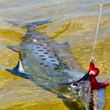
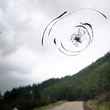








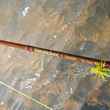




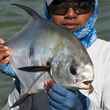




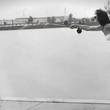

Comments
Todd Tanner replied on Permalink
John Juracek nails it. We've arrived at the point where patterns are differentiated from each other by the color of the Crystal Flash, and where flies are tied solely to catch fishermen, with the fish being an afterthought at best. Which is a great reason for all of us to tie our own flies, to meet our own needs.
Alyssa Halls replied on Permalink
I agree with this entirely. I have only been a production fly tyer for about 5 years (my husband and partner in business has been in the game much longer) but I catch myself looking in the bins at shops thinking "those flies are way fancier, more intricate, and more complicated than anything I tie" with a hint of shame at the back of my mind. Why? Because I charge the same price for my flies and they are quite simply easier and less costly to tie. But you know what? They work. And they don't fall apart. I've fished many of those complex hopper patterns with shaped legs and mono eyes and frankly a bunch of bs tied on a hook, and while they look more realistic off the water, they don't fish properly. They flip over, they sink, they disintegrate after the first eat, or they dont get eaten at all. But those in the know will always buy the tried and true, simple profile paterns like the sparkle dun, or the chubby. Let the others think that more materials means a better fly, and find out on their own that this isn't always the case. Thanks for the article!
Rob horgan replied on Permalink
Alyssa mentions a key point : durability. We should all know about "planned obsolescence", it's been a tenet of commercialism (business) for over 60 years. I know of a fly retailer in the UK who sells a fly, the pattern of which is much vaunted and very effective on a very well known river, Hampshire's most famous, but the peacock herl is deliberately un-reinforced in the tying so that the fly falls apart after one fish, or perhaps a bush or tree, and the angler needs to purchase a handful for a day's
fishing !
Steve from nj replied on Permalink
I whole heartily agree with the sentiment here. It is very difficult to squeak out a living selling fly fishing equipment in the northeast. What is most valuable but often overlooked is the ability to teach skills. It is easier to sell the newest high performance rod reel and line than it is to work with a customer and develop casting, tying and presentation skills. So I ask those fisherman that are dedicated to their fly fishing craft to support your local fly shop and patronize those shops that can teach the necessary skills to catch fish.
Jim Hester replied on Permalink
Can't agree more! Mr. Jurecek's honesty is refreshing.
garry king replied on Permalink
John...you are 100% on the fly development. I have the same thoughts when I see the magnitude of fly bins in each shop. The CDC has added a whole new section, with the wingmaterial being the only change. Thanks, garry
Jason replied on Permalink
Couldn't agree more ...I would also say your piece here was reflected in blue ribbon , which is why it's still one of the most respected flyshops by serious anglers.
Jim replied on Permalink
I know exactly what you're talking about. A lot of newer fly fishers think they need an overdressed fly, but you don't. I think that's why shops end up feeding that perception. Like you said, you have to experiment and develop a fly that works for your particular fishing situation. I think that's part of the fun in fly fishing. And when you'be cracked the code, it's an immense feeling of success.
Bernard replied on Permalink
I want to play devil's advocate a little bit, as someone who adamantly loves fly tying. I don't think that creating "fisherman" catching flies is at its roots intended for sales only. Tying is as much an art as it is a practical solution to matching hatches, etc. A beautiful fly still has intrinsic value even if its completely useless for fishing.
Therefore, in my opinion, it comes down to how flies are marketed, or pushed in shops. I think awareness is important, being conscious of why a fly is tied the way it is, or why its being advertised, say, vs. another related pattern. However, we shouldn't take the art out of fly tying, or innovation out of fly tying.
Jason Klass replied on Permalink
Agree 1000% with this post. Especially the comment about the tiny nymphs with 800 ingredients. We're trying to fool animals with the brain the size of a pea--not Einstein. More often than not, modern fly designs are an attempt to sell the angler on the latest and greatest materials--not efficacy. I wonder how many patterns are in fly shops right now that were never even tested and just stocked because they looked "fishy" and would sell. Take a pattern like The Usual. It literally uses one ingredient (rabbit's foot) and is a killer pattern. That unassuming fly has proven itself for years, yet you'd be hard pressed to find it in most fly shops today. And if you ask about it, it would be brushed off because it's too simple and doesn't incorporate all the new flashy materials. That's why I tie and don't buy. I can make whatever I want and not be a slave to what the fly shop owners think I need (read: will buy) and create what I actually need to catch fish.
Jeff Dickey replied on Permalink
As a tyer and (sort of) historian of classic atlantic salmon flies, this looks like very much a case of history repeating itself. In the 1820-30's, atlantic salmon flies were relatively simple affairs that caught lots of fish. As the century progressed, the flies became increasingly more elaborate, complicated to tie, and used more and more rare and expensive materials, largely made accessible due to the expansion of the British Empire and the expanding demand for exotics by the millinery trade.
The point is that the evolution of the atlantic salmon fly was driven almost entirely by the desire to catch fishermen, not fish. The fish did not seem to respond better to a fly that might cost $80 (in today's money) to dress versus a fly that cost $.80, but the fishermen were attracted to the rare, unusual, and new, and flydressers in a competitive market needed to present something that would attract sales.
In my experience, catching a fish on a fly is probably 50% presentation, 30% size, and 15% color, and 5% the pattern in terms of relative importance. This is where people tying their own flies changes the game - rather than getting sucked into whatever nonsense on a hook is in the local shop, tie a dozen pheasant tail nymphs (3 materials) or blue wing olives (2 materials) in various sizes and have a great day fishing. Total investment including hook is probably $.05 a fly.
Not to mention that catching a fish on a fly you have tied is exponentially more rewarding. Chasing the pattern rather than improving skills presenting the fly and matching the size is the game fly shops need us to play to stay in business, but it doesn't help them catch any more fish.
Jay replied on Permalink
I disagree. I am a shop owner and designer as well. Most of the new flies coming out of the wholesale catelogs are designed by guides and fisherman. Sure, there are some over dressed flashy foam flies that might not work in PA but work great on the Blackfoot and Clark Fork. I scour the catalogs every year and think that its great to have so many cool new materials and patterns to look at and choose from. I find new problem solvers every year in both materials and patterns. And there are still new patterns showing up that are sparsely tied practical natural fibered flies. Sure would be boring to go into a shop the only had stimis, elk hairs, and adams...
Fred Rickson replied on Permalink
Well, if the local fish only like an Adams or Elk Hair Caddis, why practice self-flagellation by fishing other patterns?
Jay replied on Permalink
a Bloom's Caddis or Beorcher's Moostail work better...
jon replied on Permalink
I agree. The main reason I tie is not for price, or love of tying but to keep it simple and occasionally try to make a bug that looks more like what the fish are eating. More and more in the store and online you see stuff that looks cool but for the life of me I have never seen anything like that on the river. While we are getting more and more varieties, my fly box is getting smaller and smaller.
Dan Gracia replied on Permalink
Hi Jon,
I had to laugh at your post. I taught the Orvis West Coast Fly-Fishing Schools on Western Spring Creeks for 10-years along with Dean Schubert and one of the things I used to do was present the "bug show" for each class. In that show we would go over the various orders of insects and stages of their life-cycles that were important to fly-fishers; how to identify them; and how to imitate them. One of my favorite sayings that I picked up from Dean was "Remember there are flies that are tied to catch fisherman and flies that are tied to catch fish. You want the ones tied to catch fish!"
Your Sparkle Dun is definitely a fly tied to catch fish. I also use an old fly called a Quigley's Cripple (Bob Quigley from Fall River) that was developed for tough spring-creek trout that have a lot to choose from and seem to be ignoring all the "normal" flies. He too figured out that the emerger stage when the mayfly was helpless while trying to extricate itself from its nymphal shuck and turn into the adult was a particularly appealing morsel to selective trout. I have to admit though that your Z-lon tail probably does a better job if imitating the shuck of the emerging mayfly than the brown or tan marabou he used. But both flies were tied to fool the fish and not to impress the fly-fisher and that's why I still tie and use them.
George M Semel replied on Permalink
Well I been tying Sparkle Duns for about as long when I first heard of them and Craig sold me that first bit of Zelon at the Suffern Show back I guess it was 86 or 87! I like simple and quick in my fly tying, The Sparkle is quick easy and above all cheap to tie! Looking back on 54 years of fly fishing, I fish very productively with really few "Patterns"! I tie all my own. And in my own fishing I have noticed two things over the last 30 years that stand out, my flies on average gotten smaller and I dress my flies a lot sparser than in years past! There is so many choices now, that it becomes not only confusing but also complicated to the new to the sport and not so new also! There is also pressure on Fish and Game departments do to declining License sales and participation in fishing and hunting! Which goes to having to come up with new stuff to sell all the time! We are living in a golden age as far as far as the quality of the fly tying materials we have along with the rods, reels, lines and tippets!
Jule McDowell replied on Permalink
There is a pattern book out there called "The Best One Thousand". That means that they culled a huge number of flies to get down to the BEST 1,000 to put in their book. Now I know they cover all sorts of quarry and the flies for those fish, but really? Really? This just proves Mr. Juracek's point. Except.....Almost all fly tyers experience that moment of "What if....?" What if I add a red throat? What if I change that carapace to flattened mono? What if I move those wings off to the side and split them? What if I....? And that that probably won't change. At least I hope not.
Rich Bauer replied on Permalink
Datus Proper made a very similar argument in his book "What the Trout Said: About the Design of Trout Flies and Other Mysteries" in 1982. But not very much has been written about the process of experimentation and change of design and verification that the changed pattern is really consistently better than the starting one. Vincent Marinaro describes his version of experimentation which he called a Game of Nods in his 1977 book "In the Ring of the Rise", but he could have expanded on it much more than he did.
George Semel replied on Permalink
Well, I like quick and simple fly patterns. Something I can tie, quickly with inexpensive materials. That being said, some thirty-six years ago, I was in a hurry to tie some Letort Hoppers, so rather than spin a deer hair head and then trim, I tied a bunch with a clipped head like the Elk Hair Caddis, and when fishing. I tied a half dozen in about 20 min. They worked and worked well, it's how I tie the Letort hopper and Cricket this way! When I go into a fly shop I look at the flies, to me they look way overdressed and tied by people who never seen a trout in their lives. I understand the problems fly shops have, it's the same problem most businesses have, how to I keep my customers coming back and how to I get new customers so I can grow my business. On really picky fish, I go right to a # 22 Griffith's Gnat or Adams. I generally will hook a fair amount of fish, then there are days were the only fish I am going to get is the one I will have to buy at the fish market, that is the nature of the sport. It's always been about putting the right bug in the right place for the trout to take it.
SST Flies replied on Permalink
I see both sides of the coin... However, some of the best flies I've continued to use over the last 43-years have been the most simple of flies to tie. Take a look at Doug Prince's Mink, Squirrel, etc. Slightly more difficult in the tying process, but wonder flies, is Andy Puyan's A.P. series. Ted Trueblood flies? The list goes on...
While I enjoy sitting down and getting creative with new material(s) as well as fishing these flies, I also function on the K.I.S.S theory (Keep It Simple Stupid). There's a damn good reason these simple flies of yesteryear are still being published in books!
Kirk Miller replied on Permalink
When I lived in Idaho we would make yearly treks to the South Fork/Henry's Fork/Fall River area for a 4-5 day trip. As trip organizer, I issued an executive order that we would have a "Classics Day". No floatant, no strike indicators, bamboo if you have it, natural material only flies that preferably could be found in Ray Bergman's classic book "Trout". I caught a cutthroat on my first cast with an old hopper pattern and those of us that stayed true to the theme caught fish all day.
Fred Rickson replied on Permalink
Why so many "new" flies? In response to new goofy names being applied to classic patterns (think a purple body Adams now being called a Purple Haze), I once wrote a popular video tier that I had invented 10 new flies. They were all classic Pheasant Tails, but since I had used a different thread color on each, they were "new," and I might name them all. Never did hear back, even in defense of a purple Adams having a goofy name.
John Byron replied on Permalink
I assume the post is aimed at freshwater/trout, but there's a similar proliferation of fly patterns in the salt. There it seems to stem as much from a willingness of the target species to take just about anything that's well presented and therefore the pattern itself means less than weight, splash, sink rate, etc. From which imagination runs wild and the typical bonefish box that's carried onto the flats may have a hundred flies in 30 or 40 patterns. If you tie your own, there's no end to the range you can put together.
After a few seasons of this madness, I did two things. The first was to resolve my pattern mix to three: Gotchas (in three slight variations for bottom color), Aaron Adams's Big Ugly, and my own pattern I call the Mr G. All size 2 barbless hooks, but different eye weights to accommodate wind and water depth ... and a few blind in size 4 for really spooky, calm conditions. I start the morning with the Mr G. If the fish tire of it, I shift to the Gotcha that matches the bottom. Most days these are the only two flies I use. If it's howling wind, I'll go to Aaron's pattern and let the fish fight for it.
This overall approach seems more sane than trying to match a hatch the fish don't care about.
Kasey replied on Permalink
From my arithmetic it looks like there are 22 “amens”, one “devils advocate”, and a single person who found it in them to disagree with John Juracek. Since I’m a firm believer that dissent is the greatest form of patriotism I will disagree. As with most generalizations, broad strokes paint ugly pictures. The generalization that we are “solving sales problems” with new fly patters seems to discount the reality of location variations in fish selectivity. For instance a Chubby Chernobyl works wonders on some of my favorite water, but good luck with that fat beauty on a spring creek. So the chubby was designed for a different set of circumstances and a different set of fish. Is there potential that many other new fly patters have done the same? By the way, from my count the Chubby Chernobyl has 5 materials unless you count the foam twice as Mr. Juracek has. With my jest aside and with all due respect to everyone who has commented here, I appreciate your thoughts. Just wanted to stir the pot.
Glenn Dotter replied on Permalink
To a degree, I agree with the writer. But, that is capitalism. As a fly fisherman for 60 years and a tyer for 40, I have found that almost anything you can tie will catch fish. Just some better than others.
But the sales issue is throughout the industry, and as I said, that is capitalism. Rods, reels, line, even nippers have gotten ridiculously expensive. Now you "have to have" a dry fly rod, a nymph rod, and a streamer rod. Lines for $120 "cast right where you want it". Hooks that are so much sharper. Nippers for $80-120 that do the same thing as a pair of nail clippers. How sharp is sharp? For how much more? It's about personal responsibility to choose. The newer generation of fly fishers think more expensive means it has to be way better. I've seen folks who look like a Sage or Orvis catalog who cant cast worth a hoot. But they sure look pretty. But that's their choice and I support their right to spend their money however they see fit. The same goes with flies. The shops are in business to make money. It's up to you to choose.
Pages